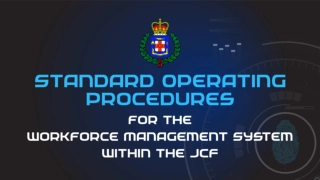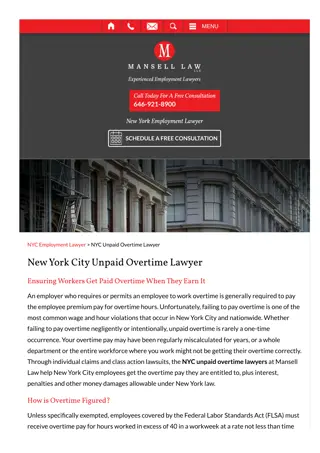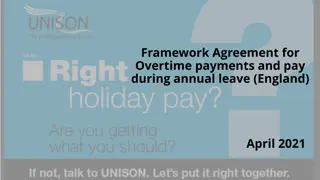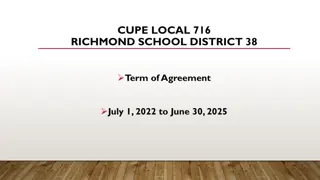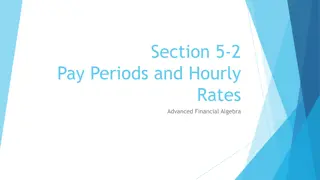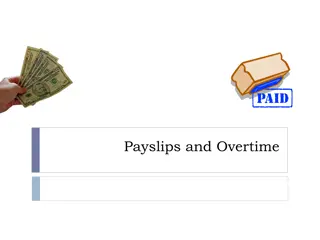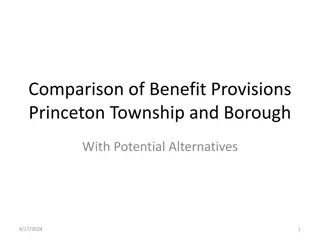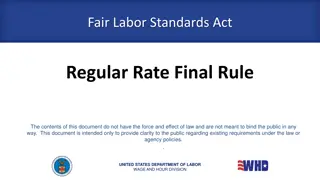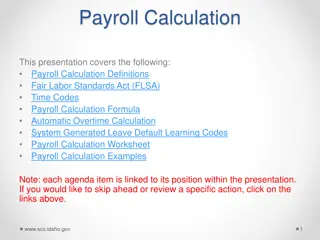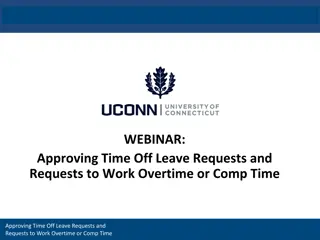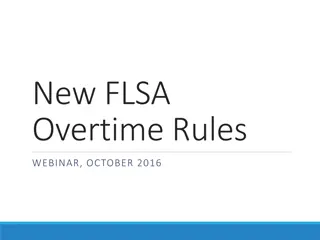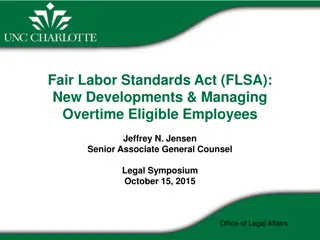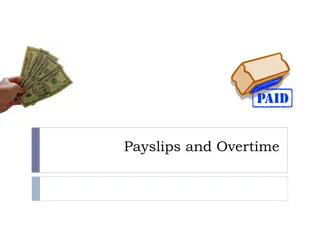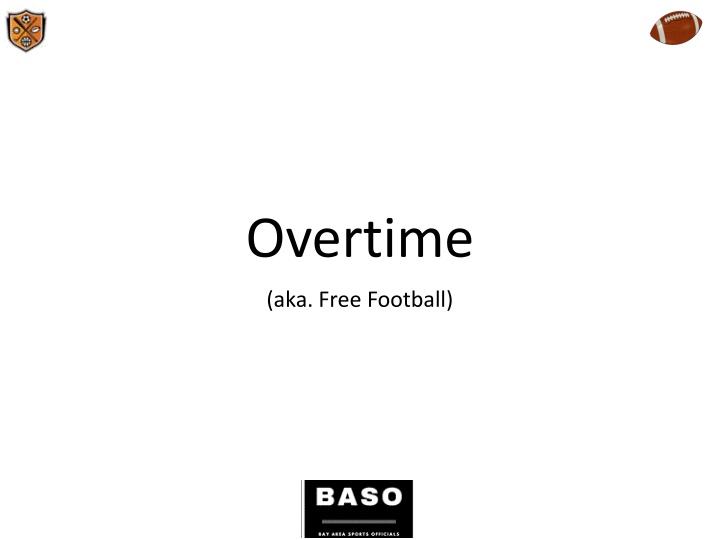
Overtime Rules in Football Contests Hosted by CCS and Section Play-offs
Explore the detailed procedures and regulations surrounding overtime in football games hosted by CCS schools and Section Play-offs. Learn about the ten-yard line tie-breaker system, general procedures for regulation and overtime periods, and specific situations that may arise during overtime play.
Download Presentation

Please find below an Image/Link to download the presentation.
The content on the website is provided AS IS for your information and personal use only. It may not be sold, licensed, or shared on other websites without obtaining consent from the author. If you encounter any issues during the download, it is possible that the publisher has removed the file from their server.
You are allowed to download the files provided on this website for personal or commercial use, subject to the condition that they are used lawfully. All files are the property of their respective owners.
The content on the website is provided AS IS for your information and personal use only. It may not be sold, licensed, or shared on other websites without obtaining consent from the author.
E N D
Presentation Transcript
Overtime (aka. Free Football)
When Does It Apply CCS By-laws concerning games that end in a tie score after regulation time has expired. "The ten-yard line tie breaker system, recommended in the National Federation Football Rule Book, will be used to determine the final outcome in all varsity contests hosted by a CCS member school and all rounds of the Section Play-offs." Email Excerpt: No football contests hosted by a CCS school, either in league or out-of-League (including preseason games), can end in a tie. You must play overtime.
General Procedure End of Regulation 3 minute intermission Captains meet at 50-yd line coin flip Go over any carry-over penalties Visitors choice Offense / Defense / End of Field Start 1stand Goal ball placed at 10 yard line anywhere between hash marks. Carry-over Penalties can change the starting spot. Each team gets 1 timeout per period (series for A and series for B). No timeouts carryover from regulation or overtime periods. Each team is given a series of down.
General Procedure When the defensive team gains possession of the ball, the down and series immediately end for the offensive team. If the game is still tied after the 1stovertime period, then: 2 minute intermission before starting the period. Team captain meeting the loser of the coin toss will be given the choice (offense / defense / End of Field) Every subsequent period the chose flips back and forth. Penalties for any dead ball fouls after the end of the 4th period or during a successful try at the end of the 4th period may carry over.
General Procedure If a safety is scored by the offensive team, the succeeding spot will be the 10-yard line in possession of the team that was on defense, provided the defensive team has not had its series of downs. When the defensive team gains possession of the ball, the down and series immediately end for the offensive team. The offensive team shall be awarded a new series of downs when any one of the following occurs: a. Offensive team recovers a scrimmage kick (field-goal attempt) between the goal lines after it has been touched first by the defensive team beyond the neutral zone. b. Defensive team is guilty of roughing the kicker, place-kick holder, snapper or passer. The line to gain is always the goal line regardless of whether or not a penalty enforcement places the ball more than 10 yards from the goal line to start a new series. If the defensive team scores a safety or touchdown, the game is ended. No try will be attempted if the winner of the game has been determined. Post scrimmage kick enforcement is not applicable in this procedure. Any PSK fouls are administered from previous spot. Clock does not run during overtime. But 40/25-second play clocks runs as normal.
Overtime Situations 1: On fourth down in overtime play, A scores a touchdown. After the score, but before the try, B1 commits an unsportsmanlike foul. RULING: The penalty is enforced from the succeeding spot on the try. Non- player fouls, non-player unsportsmanlike fouls and dead-ball fouls are penalized on the succeeding spot. 2: During the down in which time expires for the fourth period, A1 advances for a touchdown making the score B-22 and A-20. On the try A2 passes complete to A3 in the end zone. Following the try B1 commits an unsportsmanlike foul. RULING: The penalty for the foul by B1 after the successful try will be administered from the succeeding spot to begin overtime play. COMMENT: In this situation the referee should explain to the captains at the time of the coin toss the fact the penalty will be administered on the first series of downs in the overtime. The place from which the ball will be put in play for each team could have an effect on the choice made by the winner of the toss.
Overtime Situations 3: When the regulation game ends in a tie, the teams use the recommended tie-breaking procedure. A wins the toss and elects to take the ball. A1 scores on the third down. After A1 crosses the goal line: (a) A2 clips B1; or (b) B1 strikes A2. RULING: Dead-ball fouls in both (a) and (b). The score counts and the penalties in both (a) and (b) are enforced on the try, because that is the succeeding spot. 4: On third and 4 in overtime play, B recovers a fumble or intercepts a pass. RULING: The down ends as soon as B1 recovers or intercepts. In both cases the series of downs is ended for A. 5: On third and 6 in overtime play Team A attempts a field goal. The attempt is not successful and B recovers on the 1-yard line. RULING: The down ends when B1 recovers. The series is ended for A.
Overtime Situations 6: The fourth quarter ends during a scoring play. During the successful 2-point try, B9 is called for pass interference. A accepts the result of the play, which ties the score and chooses to have the penalty assessed at the succeeding spot. RULING: This is correct. Since A, by rule, can choose succeeding spot enforcement, and the try was successful, A will likely take enforcement at the succeeding spot to begin overtime. Game officials must be certain to explain the options clearly, not only during penalty administration, but also during the overtime coin toss. 7: In overtime play with third and goal from B s 4-yard line, B1 interferes during a forward pass. RULING: If the penalty is accepted it will be third and goal for A on B s 2-yard line.
Overtime Situations 8: In overtime play, (a) On second; or (b) fourth down from the 9-yard line, A1 interferes on an incomplete forward pass. RULING: In (a) it is A s ball second down from its 24-yard line. In (b) B will decline the penalty and take the ball on the 10-yard line. 9: At the end of the regulation game the score is tied, 7-7. Immediately after the last down of the fourth period A1 strikes B1. RULING: A1 will be disqualified and may not participate during the overtime period. The penalty for A1 s foul will be administered from the succeeding spot. If B is the first to put the ball in play it will be from the 5-yard line. If A is the first to put the ball in play it will be from the 25-yard line.
Overtime Situations 10: At the beginning of the overtime, A wins the toss and elects to go on offense. On first down, B1 intercepts a pass, but then fumbles and A1 recovers. RULING: The ball became dead and A s series ended immediately when B1 intercepted. A1 recovered a dead ball. B will put the ball in play to start its series of four downs, first and goal on the 10-yard line. 11: During the down in which time expires for the fourth period, A scores a touchdown to make the score 14-13. During the successful kick try, B1 roughs the kicker/ holder. RULING: If A accepts the score, the penalty is enforced to start the overtime. If A accepts the penalty, the try will be replayed from the 1 -yard line.
Overtime Situations 12: During an overtime period, it is fourth and goal from the 6- yard line. During A s unsuccessful field-goal attempt, B1 charges into the place-kick holder. RULING: It will be first and goal for A at the 3-yard line following enforcement of the roughing penalty which also includes an automatic first down. 13: During the first overtime period, A chooses to go on offense first and scores a touchdown on the third play of the series. During the successful kick try, the holder is roughed by B1. A accepts the successful kick try. RULING: Since A accepted the result of the play, B will be penalized from the succeeding spot. B will start its overtime series from the 25-yard line after the penalty for roughing the holder is enforced. (10- 5-2)

